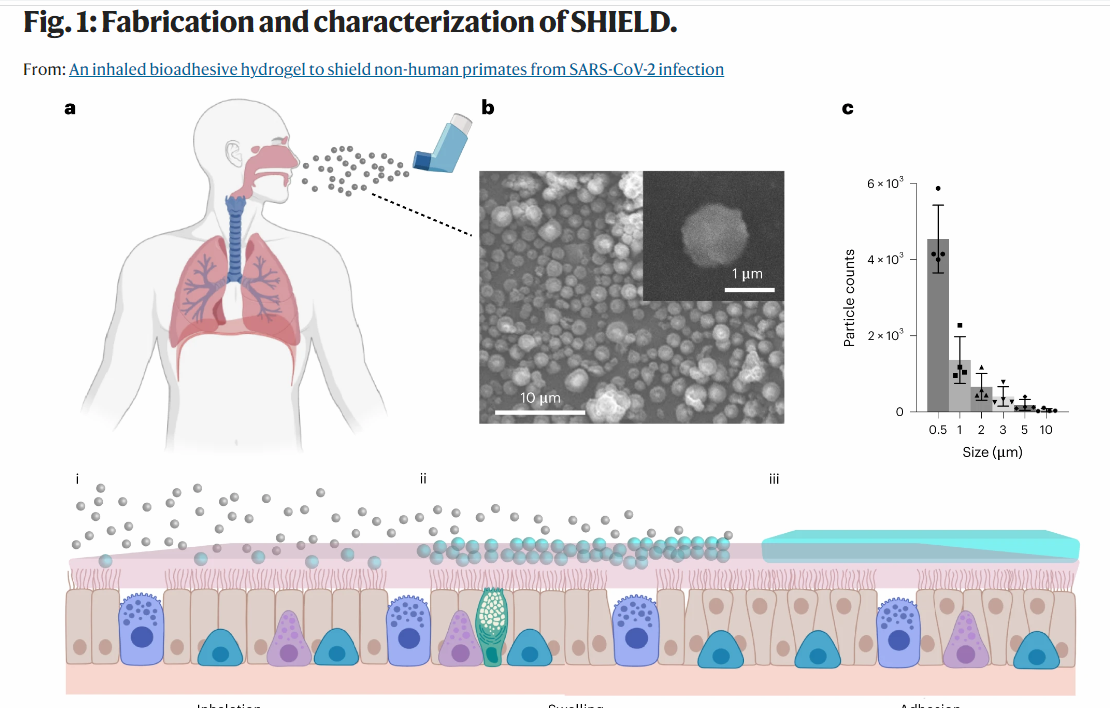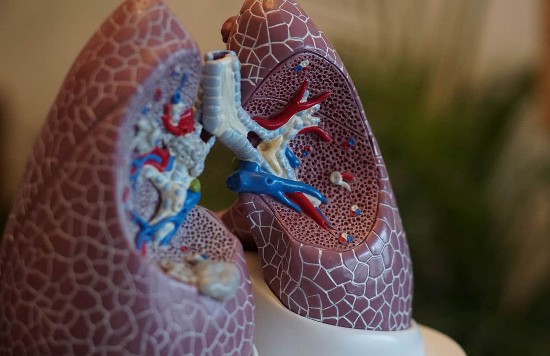The journal Nature Materials published an article in February describing the invention of a bioadhesive hydrogel that can be administered through an inhaler shows it blocks COVID-19, H1N1 influenza and pneumonia viruses from infecting the animals to which it has been administered as an inhaled dry powder. Future clinical trials should prove its effectiveness in humans.
What the inhaler has been designed to do is reinforce the natural mucosal linings in airways, our first line of defence against airborne infections. Mucus traps invasive bacteria, fungal spores, and viruses. But with the onset of the COVID-19 global pandemic, our natural mucosal defences have been overwhelmed.
The inhalable powder is called Spherical Hydrogel inhalation for Enhanced Lung Defense which produces an acronym, SHIELD, that pretty much describes what it does. Tested so far in a laboratory setting using animal simulations, and mouse and primate studies, repeated doses have had no ill effects on normal lung function.
The lead author of the published paper is Ke Cheng, a Professor in Regenerative Medicine, at the College of Veterinary Medicine at North Carolina State University, as well as a professor in the university’s Department of Biomedical Engineering. This is not the first time I have come across Professor Cheng, who I wrote about two years ago because of his work using mesenchymal stem cells to create coatings to counteract the body’s immune and rejection response to implants like stents. In this, the professor’s latest project, he has developed an inhalable bioadhesive that doesn’t mask our immune system response, but rather reinforces it as a barrier against viral infections entering through the lungs and respiratory tract.
SHIELD is a powder made from microparticles of gelatin, acrylic acid, and a non-toxic ester. It is inhaled using a dry powder puffer. When it enters the moist environment of airways, the microparticles swell and adhere to the natural mucosal layer that lines the lungs and respiratory tract. In the simulations and actual mice and monkey studies, it is shown to be most effective within the first eight hours after being inhaled. It biodegrades completely in 48 hours leaving no traces in the body. When used it has been shown to block COVID-19 virus particles with 75% efficiency within four hours after inhalation, reducing viral loads from 50 to 300-fold. It is similarly effective with pneumonia and H1N1 influenza viruses.
Cheng describes the inhaled powder as “easier and safer to use than other physical barriers or anti-virus chemicals.” In an NC State news release, he describes the inhalable powder as working “like an invisible mask for people in situations where masking is difficult, for example during heavy exercise, while eating or drinking, or in close social interactions.”
He continues, “People can also use SHIELD on top of physical masking to have better protection. But the beauty of SHIELD is that it isn’t necessarily limited to protecting against COVID-19 or flu. We’re looking at whether it could also be used to protect against things like allergens or even air pollution – anything that could potentially harm the lungs.”

SHIELD is fabricated using food-grade materials. As a dry powder, it can be delivered with commonly-used respiratory inhalers. The results in use are predictable and repeatable. In this first generation, SHIELD is only a preventive. It is not to be used after a viral infection is detected.
Unlike vaccines which are designed to counter or prevent specific viruses, SHIELD as a preventive is non-specific. So it can be used to stop all COVID-19 variants as an enhanced protection beyond wearing a mask.
Cheng is now working on a next-generation SHIELD designed to be effective after an infection which will slow the virus from being spread to uninfected contacts.









